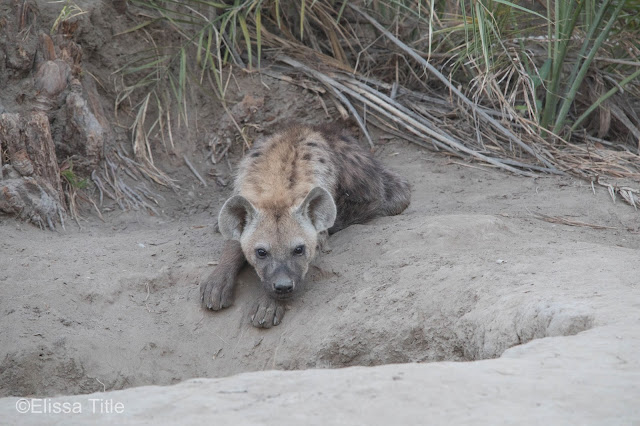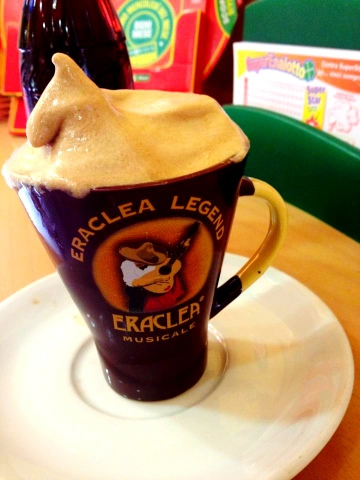From the Kalahari, it was onward to Selinda... a Great Plains Conservation camp. The camp rests on the banks of the eastern Selinda spillway in the 320,000 acre Selinda Reserve in northern Botswana. The reserve links the outer reaches of the Okavango Delta in the west with the Linyanti marshes in the east. Like our beloved Duba Plains (where we head to next), Selinda Camp was designed with the elements in mind. The crystal-clear swimming pool offers views of the spillway, billowing silks attach to the lounge area paying tribute to air, home-grown meals represent earth, and the bright flames of the evening and morning camp fires complete the ethos of being in harmony with nature.
Purchased by conservationists Dereck and Beverly Joubert (who we had the pleasure of meeting on our trip to Duba Plains this past January), the goal was to rescue the concession and restore it to its natural beauty. Prior purchasing the land, the concession and its wildlife had been hunted down to virtually nothing. Now, it provides a base from which researches are taking important strides in the effort to conserve and protect African wildlife species. Aligning with the lodge's commitment to conservation efforts, Selinda Camp uses natural materials whenever possible... from the locally procured timber and thatch to solar energy. Even vegetable matter is recycled into methane and then used for cooking through a biogas facility.
After a long journey from Tswalu (South African Kalahari) to Botswana's Selinda Camp, we went out on a quick afternoon game drive where we saw four one-month old lion cubs with their mama. We also had the pleasure of watching a pack of wild dogs (unsuccessfully) hunt for dinner. We chased them through the bush, wind blowing through our hair, until finally they gave up on the chase.
 |
| One month old lion cubs. |
 |
| Four one-month old lion cubs nursing. |
 |
| Following the wild dog hunt. |
The following morning, we went back to the lion cubs only to see that the lioness had left the cubs alone to go hunting. With no fences on this reserve, she could be gone several days... leaving the cubs vulnerable to other predators and nature's will. Botswana is one of the lion's most important strongholds, holding roughly 3,000 lions (about 10% of Africa's lion population). With high cub mortality rates, however, we can only hope these cubs will survive to adulthood...
After driving around the reserve, we came across two more lionesses with more cubs... These ones being 3 months old. Not too far off, we came across another two lionesses (part of the same pride) who were calling to the lionesses with the cubs. We followed these two for quite some time, until they laid down for a nap on a termite mound.
Along our drive, we also came across a beautiful bateleur... a bird species we had never seen before. The bateleur is a medium-sized eagle whose closest relatives are the snake eagles. It has pitch black feathers with white under the wings, a bright red face and legs, and a black tipped beak. The plumage of a young bateleur, however, is a uniform dark brown. Bateleur eagles can spend 8-9 hours each day in the air looking for food and can cover up to 300 miles in their search for food.
In the afternoon, we opted to go on a boat ride on the Selinda spillway after an unsuccessful morning of looking for leopards and getting yelled at by two honey badgers. It turned out to be quite the adventure as we got charged by hippos several times. Because hippos go under the water, they often pop up when you least expect them.
Hippos are the third largest living land mammals (after elephants and white rhinos) standing at about 13 feet long and 5 feet tall. They often weigh an average of 55 pounds when born with a grown weight of up to 7,000 pounds. Unfortunately, hundreds of hippos are shot each year to "minimize" human/wildlife conflict though ditches and low fences easily deter hippos from local communities. The sad reality is hippo meat is very popular in addition to valuable ivory teeth and hippo fat.
From the boat, we also saw several elephants... the world's largest terrestrial mammal. There are two recognized subspecies of African elephants (savannah and forest). Savannah elephants are larger with their tusks curved out while forest elephants are darker and have tusks that are straighter and point downward. These large herbivores weigh 4,000 to 14,000 pounds and can eat up to 300 pounds of food and drink 30-50 gallons of water in one day.
Below are some other highlights from our various game drives. Now, we are off to Duba Plains via helicopter... another Great Plains Conservation camp!
 |
| This roan was extremely hard to photograph as it wasn't in the best light and kept running with its back towards us. |
 |
| Water cranes by the water. |
 |
| Mother elephant with her calf. |
Thanks for reading about my African adventures... Stay tuned for what's to come and be sure to hit the subscribe button to be notified of new posts! As always, follow my instagram @elissatitle for more pics.


























Comments
Post a Comment